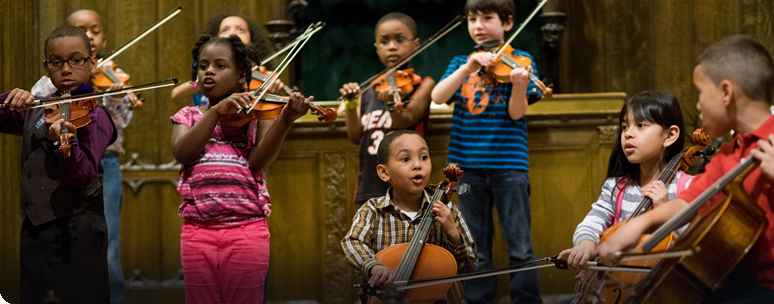Sonata Series #3: Program Notes
About Escher
Mario Carro, composer
“About Escher” is a three movement work written by Mario Carro in 2015. The work follows traditional classical structure by exploring a fast movement, a middle slow movement, and a fast finale movement. The work was commissioned by two of Mr. Carro’s friends–a husband and wife duo called Duo Escher. Mr. Carro drew on the artwork of Mauris Cornelis Escher for inspiration, and each of the movements is based on one of Mr. Escher’s drawings. The first movement, “Tower of Babel,” is characterized by chaos, noise, and confusion. Heterophony dominates this texture where a single melodic line is built between the two different instruments. The violin and marimba fall in and out of unisions in this movement which makes the melodic line sneaky and deceiving to listeners. The second movement, “Phosphorescent Sea,” starts with the marimba alone making waves of sound followed by the violin singing an expressive melody with a tremolo section ascending up to the stars. In the closing of this movement the violin joins the marimba in a recapitulation of the opening. The third movement, “Dolphins,” is a joyful and exuberant sonic experience depicting dolphins leaping gleefully around a boat. This is one of Mr. Carro’s most successful works and has been played with over 30 duos in Europe, Asia, America, and Oceania.
Three Miniatures for Solo Violin
George Benjamin, composer; Notes by Paul Griffiths
Benjamin’s Three Miniatures date from 2001. All were written for friends: the violinist Jagdish Mistry, whose daughter receives a lullaby; the music publisher Sally Cavender, Benjamin’s staunchest advocate; and Klaus Lauer, who presented concerts of new music at his hotel in Badenweiler, where the three pieces had their first complete performance at the hands of another friend, Irvine Arditti. According to the composer, they all explore ‘different facets of the same compositional technique’, which perhaps has to do with a modality rooted in the instrument’s tuning and with canonic processes not limited to the second piece. The first is a sombre melody with double stops and accompanying open strings, lifting off into the upper air of harmonics. ‘A Canon for Sally’, as canons will, mixes constraint and freedom. In the finale, delicate pizzicato music prefaces and accompanies the song.
Gnizo
Notes by composer Kareem Roustom
The word Gnizo, from the Syriac language meaning ‘invisible’, refers to a poetic category of sung text in the church of Antioch liturgy. Gnizo also refers to the practice, amongst some members of the Syrian Orthodox church, of “burying or . . . burning loose pages of holy writing”. Adopted from earlier Jewish practice, Gnizo was an act of reverently burning sacred text pages/papyrus when it was damaged through intensive use, or if the documents needed to be hidden from non-believers who aimed to destroy them. This work, like most musical works, is also filled with hidden meanings and, possibly, hidden texts. The first two movements are based on hymns (or in the case of the second movement a fragment of a hymn) from the Antoch liturgy as practiced in the Levant and the diaspora. (I’ve been inspired by recordings of these hymns that are available through the UNESCO Collection AUVIDIS). Listening to recordings of these hymns during our time of pandemic has given me comfort. These recordings also transport me back to the Syrian village of Saidnaya, where an old convent, founded in 547 A.D., is located. As a boy, I visited this holy place with my family a number of times and I have vivid memories of the stone church within the convent. There was a certain quiet in that church that I’ve not been able to find elsewhere. There was also an acoustic resonance that is ideal for recording vocal music of this kind. Some of the recordings that I’ve been listening to were made in Saidnaya. The presence of the ‘invisible’ was something that I felt strongly in that church. The third and last movement is not based on a hymn but uses the formal structure of one. The built in repetition of hymns must aid in the meditative aspect of group prayer. This movement is a sort of prayer. Then again much of the music that I write has an element of prayer to it. This work was commissioned by and is gratefully dedicated to percussionist Piero Guimaraes and violinist EmmaLee Holmes-Hicks.
The Pathless Woods
Notes by composer Kirsten Volness
The title is taken from a quote on a tea bag– “There is a pleasure in the pathless woods”–an excerpt from Lord Byron’s poem, Childe Harold’s Pilgrimage, in which a disillusioned world wanderer marvels at the ways in which Nature’s sheer power overwhelms Humankind. Written in December 2020, amidst peak burnout and COVID spike, my piece is a stream-of-consciousness reflection on this critical moment when we have awakened to an opportunity to reimagine the world together. Our priorities have come into focus, new paths forward have been illuminated, a hopeful spirit rises, and as much as action is overdue and necessary, we must also rest and gather strength to navigate difficult times ahead. Many musical choices were inspired by my dear friends for whom it was written, EmmaLee Holmes-Hicks and Piero Guimaraes, who also graciously provided percussion samples.
Read performer and composer bios here.
Watch and Listen: Sonata Series Event #3
Premieres Thursday, January 28 at 7pm EST
|

